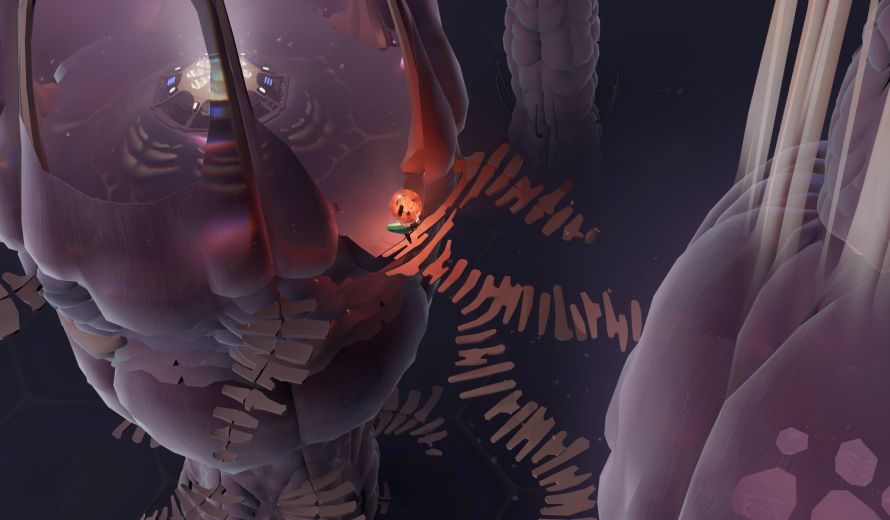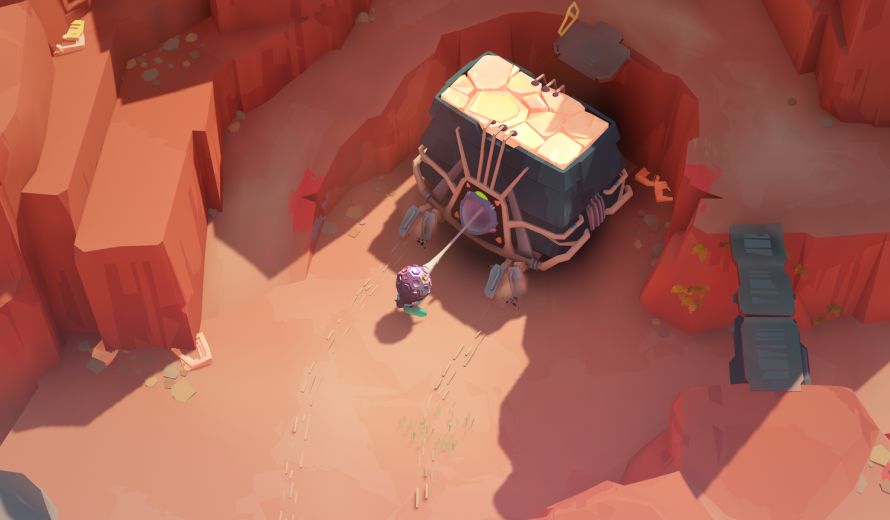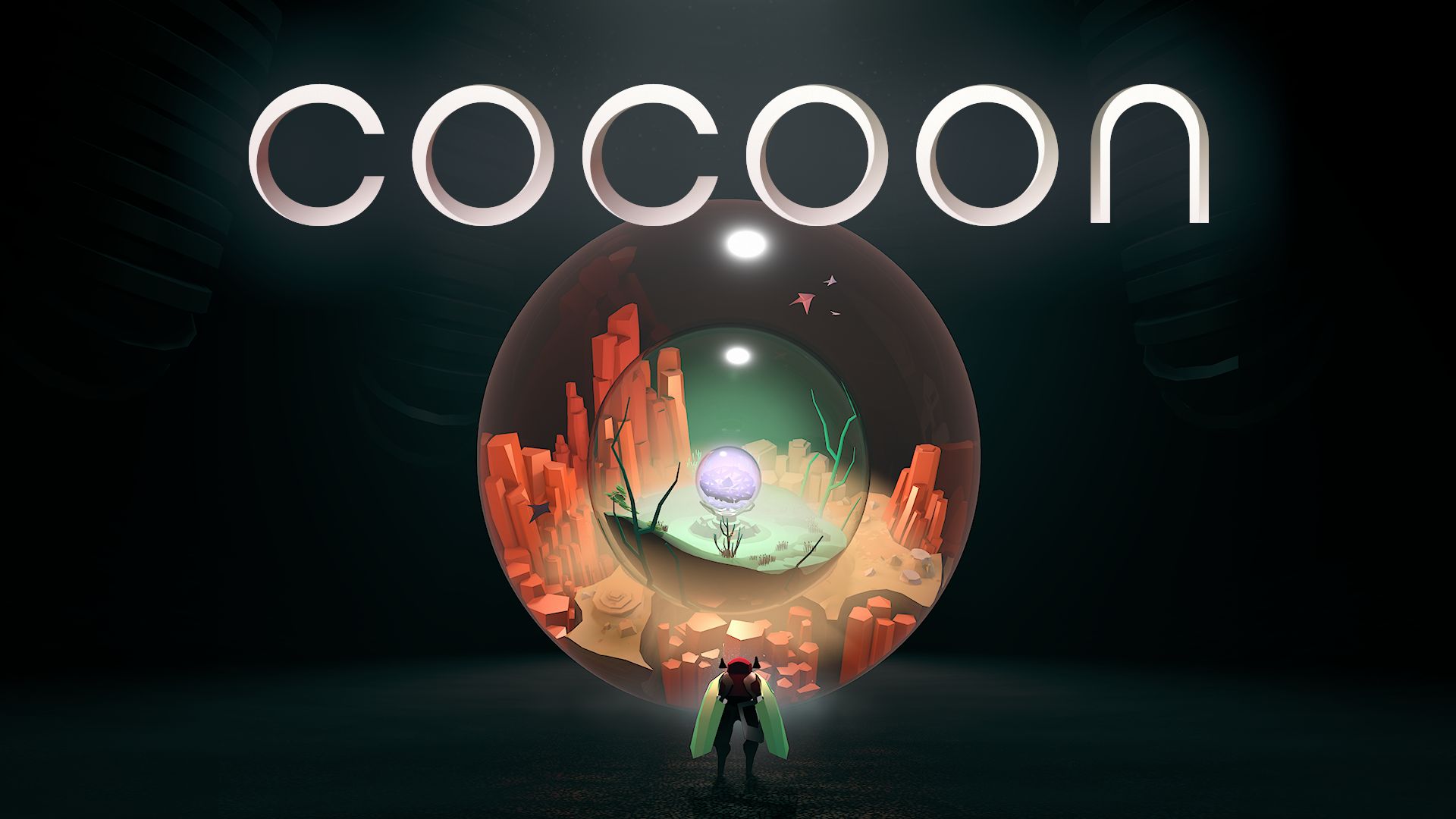Cocoon Review
Jeppe Carlsen, best known as the lead designer for previous puzzler games Limbo and Inside, is back again with Cocoon, developed with Geometric Interactive. Cocoon can be best categorized as part puzzler, part adventure, part platformer and part exploration game. If you have ever played the iconic puzzle-adventure game, Journey, you will feel right at home from the opening screen. Like Journey, Cocoon eschews any sort of narration. The story and gameplay unfold as you explore the surrounding area. Everything is a mystery waiting for you to explore.
I must emphasize that the game imparts the story and gameplay mechanics solely through the visuals and the soundtrack. It is no small feat for a game to provide the player the information through visual and aural cues without resorting to narration or notes or logs. Cocoon does this masterfully.
To expand on the game’s ability to guide players, a further look at the soundtrack is warranted. The score is an eerie futuristic electronic mix and dictates much of the mood of the game. Beyond that, the music is also used to alert the player they are on the right path. When you are about to solve a puzzle, the music swells providing positive reinforcement.
Journey Vibes
Geometric Interactive designed the game aesthetics with a palette similar to the aforementioned Journey. They depict the world in warm pastel colors, such as oranges and browns. The game opens with a beam of light descending from the sky. The beam of light goes through a cliff-side obelisk, which lights up with inscriptions in an unknown language, before it stops at a pear-shaped cocoon. The mysterious light beam causes the cocoon to undergo metamorphic changes from which the protagonist emerges. You view the world and character from a 3/4s overhead isometric view.
The game character is non-human and looks like a space-suited moth or Mysterio from the Spider-Man comics. As you explore the world, you’ll find ancient technology littered through world stages. The ancient technology is the core of the gameplay. You must learn how to manipulate it to travel around the world.

The control system is bare bones. You move in one of the four directions and interact with the environment with a single button. At first, this limited control scheme seems counter-intuitive to a puzzle game, but fret not. Cocoon has a lot of nifty puzzle tricks. The early stages of the game do a good job of introducing to the basic puzzle mechanics.
From the initial stages, the puzzles become steadily more complex. You’ll move from manipulating levers and switches and geodesic balls. One switch is a geodesic ball you need to lift and carry. Connected to the ball is an organic style rope you pull along a rail. It’s an old puzzle mechanic given a new look.
Intuitive Puzzles
Cocoon’s puzzles are also visually well depicted. You’ll run across markings or runes that form a pattern around a central locus. Almost instinctively, you understand these markings are an activation point. Sure enough, step into the circle, press the action button, and the runes light up and open up new areas to explore.
What Cocoon also does well is constantly changing up how you solve puzzles. Before the lever/switch mechanic becomes stale, a new mechanic starts where you have different colored orbs to use. Initially, you start with a yellow orb that is used to power tech or open doors, etc. Then, with the orb, you must manipulate the environment, such as corridors that act as tubes, to get the orb from one area to another. It doesn’t stop there, though.

Soon you’ll discover a very unexpected and unique game mechanic with the orbs. You can combine orbs, or an orb can kick you from one world to another. The first time it happens is quite an unexpected kick. That’s not the end of it yet, though. Some puzzles require you to jump from one world to the next and then back to solve them.
You will also pick up a robot companion that acts like a guide. He will direct a beam of light at an interactive object when you get near to it. There are also boss battles to tackle. Each boss presented has unique attacks and you have to determine the strategy needed to beat them.
Good But Not Perfect
As alluring Cocoon is not without a few faults. Even with its variety of gameplay mechanics, there is a sense of repetition as you move on to the later levels. The slow-moving game mechanics acerbate this. Your character has no sprint ability, so moving around levels slows down the action. Also, some puzzles require you to jump back and forth between levels to complete, which can get tedious.
Those minor complaints aside, the allure and tone of Cocoon will pull you through the four hours of gameplay. You’ll find yourself falling into a gameplaying zone where moving around the game feels more instinctual than thought out. Before you are consciously aware of it, you’ll solve complex puzzles. That is a pretty effect for Geometric Interactive to pull off.

If you enjoy exploration, puzzler games like Journey, then Cocoon is the closest cousin yet. The game exudes charm and is a joy to play. If you are tired or need a break from games that require full concentration or fast reflexes, then Cocoon is definitely worth a look. We all need palette cleansers from time to time, and Cocoon is a splendid choice to do so.
Cocoon is available now and is released on the recent console generations such as Xbox One, Xbox Series X|S, Game Pass, PlayStation 4, PlayStation 5, Nintendo Switch, and Steam.
***Cocoon PC code provided by the publisher***
The Good
- Marvelous mood and atmosphere
- Intuitive Puzzles
- Great way to chill
The Bad
- Later puzzles can be tedious
- Slow moving game mechanics

